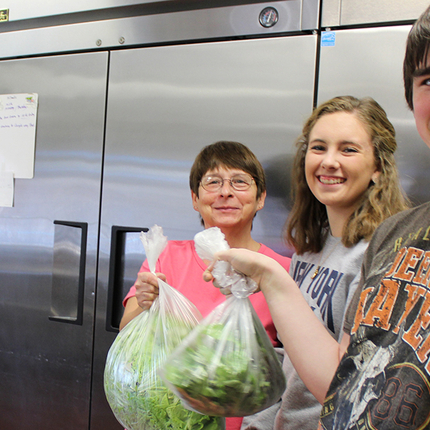In the last 20 years, small schools facing budget cuts often removed elective classes. This left skills like cooking and growing fruits and vegetables unlearned.
Center for Rural Affairs’ Greenhouse to Cafeteria program has been a solution for schools that have faced those decisions in the past. Not only does it fill a hole left in the curriculum, it also means healthier foods are served at lunch.
The program allows students to grow fruits and vegetables in school greenhouses. After harvesting, students deliver the produce to the cafeteria. Cafeteria staff then have an opportunity to buy and use the fresh food in the lunch program.
Growing food is an experience both students and educators benefit from. Hands-on activities turn pulling weeds and snapping beans into math and science lessons.
Exploring the food system teaches insights that may go untaught. Students have shared with us they feel empowered to know they are taking care of the healthy menu items.
In some schools, the summer months are being used to teach skills needed to run a market stand. These programs are helping build entrepreneurs, farmers, and experts - both culinary and in the food system.
Greenhouse to Cafeteria pilot schools are investing in serving healthier options to rural students' bodies and minds. These schools are providing experiences in careers youth may want to explore. Schools are also serving up a new dialogue about the community and rural America; one where students can envision their future self inside of, rather than leaving.





